Charlecote Park
WarwickshireA Victorian home set in landscaped deer park
Wellesbourne, Warwick, Warwickshire, CV35 9ER
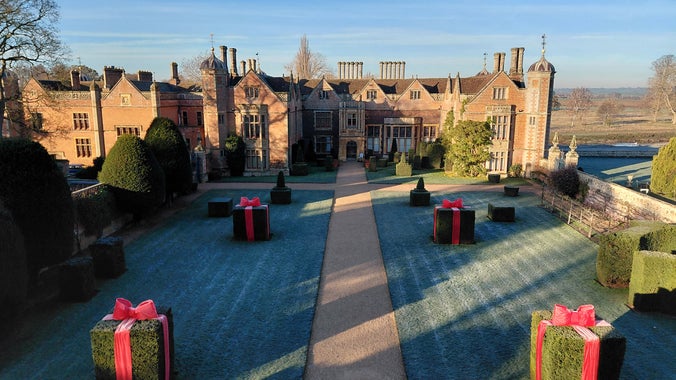
Important notice
Opening times for 9 December 2025
Asset Opening time House 11:00 - 15:30 Garden 09:00 - 16:00 Outbuildings 10:30 - 16:00 Park 09:00 - 16:00 Shop 10:30 - 16:00 Tea-room 09:30 - 16:00 Admission to the house by timed tickets only (be to collected at Visitor Reception on arrival). Last admission to the house half an hour before closing. Last admission to the parkland one hour before closing.
MTWTFSS123456789101112131415161718192021222324252627282930311234OpenPartially openClosedHouse, Parkland & Garden
Ticket type With Gift Aid Without Gift Aid Adult (18+) £18.70 £17.00 Child (5-17) under 5s free £9.40 £8.50 Family (2 Adults and up to 3 children) £46.80 £42.50 1 Adult Family £28.10 £25.50 Parkland & Garden
Ticket type With Gift Aid Without Gift Aid Adult (18+) £16.50 £15.00 Child (5-17) under 5s free £8.30 £7.50 Family (2 Adults and up to 3 children) £41.30 £37.50 1 Adult Family £24.80 £22.50 Become a member and discover more than 500 places
- Bookshop
Open daily from 10.30am in the outbuildings.
- Café
At least one of the outlets is open daily from 9.30am.
- Car park
Free parking, 300 yards. Accessible drop-off parking also available.
- Cycle parking
Cycle parking is located outside Visitor Reception. Bike locks are available to borrow from Visitor Reception, as well as a puncture repair kit. Staff in Visitor Reception will be happy to refill any water bottles.
- Dogs allowed
Charlecote Park is a two-pawprint rated place. Well-behaved dogs on short leads are welcome on the designated dog walking route, and inside the Wood Yard Café and Orangery Restaurant. If your dog is easily excited by livestock, please speak to the team in Visitor Reception to find alternative walking routes.
- Electric vehicle charging point
14 electric vehicle charging points are now available on a first come, first served basis to the left of the car park as you enter. These are 11kw chargers and these are provided by destination charging operator RAW Charging. All payments are made to RAW Charging through the onsite machines.
- Plant shop
Located next to the Visitor Reception. Open every day from 10.30am - 4.30pm.
- Shop
Open daily from 10.30am - 4.30pm. Located behind the Victorian Kitchen.
- Toilet
Toilets are open, including accessible and baby changing facilities and may be closed for short periods during the day for cleaning.
Blue Badge parking. Induction loops. Accessible toilet. Large print map. Bookable all-terrain mobility scooter. Wheelchairs available. Ground floor of house accessible. Ramps into shop and café. Uneven paths.
- Accessible toilet
Located inside the toilets by the Gatehouse.
- Designated parking
There are a number of accessible spaces located by our Visitor Reception building.
- Drop-off point
Located down the private drive. Please ask at the Visitor Reception to access this or email charlecote.park@nationaltrust.org.uk in advance to plan your visit.
- Induction loop
Available at all front-facing spaces.
- Large print (guide or menu)
Available on request at the Visitor Reception.
- Level access to food outlet
Ramp available to both the Orangery and Wood Yard Café. Large-handled cutlery and accessible chairs also available in both outlets.
- Powered mobility vehicle available
An all-terrain mobility vehicle available for hire. Please email charlecote.park@nationaltrust.org.uk to hire this in advance of your visit.
- Ramped access/slopes
Ramps available to most spaces with stepped access. Please ask a member of the team for assistance.
- Seating available
Accessible benches available in the parkland and seating available in the café.
- Steps/uneven terrain
Grounds partly accessible. There are grassy and uneven pathways and slopes in the parkland, and loose gravel and cobbled floors to navigate around the property.
- Transfer available
The buggy service runs when volunteers are available to transport visitors with mobility requirements, up and down the main drive.
- Wheelchairs available
Available to hire on arrival or to book in advance please call 01789 470 277 or email charlecote.park@nationaltrust.org.uk
Car park entrance - what3words: ///empire.pavilions.part
- By road
- 6 miles south of Warwick on the north side of B4086. You may need to drive past the blue gates or church to reach the car park. The car park is located on the opposite side of the road to the main house and parkland.
Plan your car-free visit at Good Journey.Parking: All parking is in the main car park. Designated accessible parking spaces can be found near the Visitor Reception. Limited accessible parking may be available on-site, please ask at Visitor Reception. The buggy service, running between the main gates and the House, is volunteer-led and runs on an ad-hoc basis. 14 electric vehicle charging points are available. See 'Facilities and Access' for more information. To find the Visitor Welcome Centre - what3words https://w3w.co/empire.pavilions.partSat Nav: Use the postcode CV35 9ER to take you to the main car park. To find the entrance of the car park - what3words https://w3w.co/empire.pavilions.part - On foot
- If arriving by foot, please enter through the Visitor Reception in the car park. You can easily walk to Charlecote from Wellesbourne or Hampton Lucy. To find the Visitor Reception - what3words https://w3w.co/combines.appoints.travels
- By train
- The closest train stations are: Stratford-upon-Avon – 5 miles, Warwick – 6 miles, Warwick Parkway – 8 miles, Leamington Spa – 8 miles
There are direct trains to Warwick from: Birmingham’s Solihull (20 mins), Moor Street (30 mins) and Snow Hill (30 mins), plus London Marylebone (90 mins). You can also get to Leamington Spa from: Coventry (10 mins), Oxford (35 mins) and Reading (60 mins).
See section below for bus options from Stratford, Warwick and Leamington Spa train stations.
Taxis are also available from all stations. Prices range from £12 to £15 for a single journey from Stratford and £23 - £30 from Leamington.
Plan your car-free visit at Good Journey. - By bus
- Buses from Warwick (20 mins), Stratford-Upon-Avon (30 mins) and Leamington Spa (45 mins) stop just outside Charlecote Park.
Take Stagecoach 15 bus and hop off at the Charlecote Pheasant bus stop, then walk to the car park to reach the Visitor Reception. Bus 15 runs Monday - Sunday, and journeys between Stratford-upon-Avon and Warwick/Leamington Spa.
The 505 once-a-day Flexibus is wheelchair accessible from Stratford-upon-Avon (no same-day return journey available): Monday - Friday.
Plan your car-free visit at Good Journey. - Cycling
Cycle parking is in the main visitor car park, in front of the Visitor Reception. Locks, bike pumps and a bike repair kit can be borrowed from the Visitor Reception.
Charlecote Park is situated on the Route 41 of the National Cycle Network (NCN41).
Charlecote is 6.7 miles (10.8 km) from both Warwick and Stratford-upon-Avon, and 9.1 miles from Leamington Spa (14.6 km). The cycle route has beautiful views over the heart of England countryside, with some mild inclines. We would recommend it to cyclists with some experience of cycling in urban areas if departing from Leamington Spa, Warwick or Stratford.
From Leamington Spa, we recommend following Myton Road (which has a cycling path) until St Nicholas Park in Warwick. Make your way to Stratford Road, to the south of Warwick, to re-join the cycling path.
Just outside of Warwick, keep following NCN41, which goes over a footbridge and follow the cycling path to Sherbourne, where you will have to cross a main road to reach a quiet, low-traffic lane. Follow Fulbroolk Lane over several miles. Approaching Hampton Lucy, keep following NCN41, which is shared with some local vehicular traffic, before arriving at Charlecote.
From Stratford-upon-Avon, the NCN41 follows Loxley Lane, which is shared with some local vehicular traffic.
Please note that there is no cycle route within the parkland itself and bikes are not permitted inside the parkland due to the free-roaming wildlife and livestock.
Plan your route to Charlecote Park using the CycleStreets journey planner via the by bicycle link below. (This journey planner uses OpenStreetMap data which is generally excellent by accuracy cannot be guaranteed – please respect road signs).
- Car free
- Enjoy a free hot drink when arriving by train, bus or bike, with a valid train or bus ticket or bike helmet. Plan your journey by train, bus, bike or foot at Good Journey.
Planning your visit
Christmas at Charlecote
Celebrate Christmas in style at Charlecote Park with family and friends. Wonder at the extravagantly decorated house styled as a masked ball from the mid-1800s and enjoy festive food and shopping.
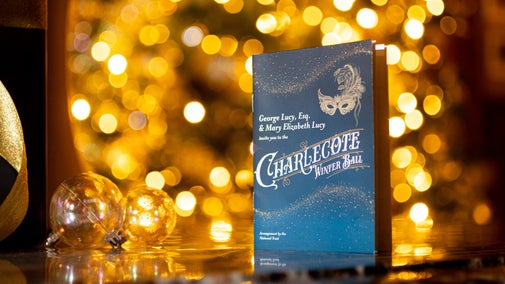
Best times to visit Charlecote at Christmas
Charlecote Park can get very busy during the Christmas period. We recommend weekday visits where possible. Charlecote tends to be at its busiest between 11am – 2:30pm during weekends and school holidays, and house tickets (not bookable) might sometimes sell out by noon on the busiest days.
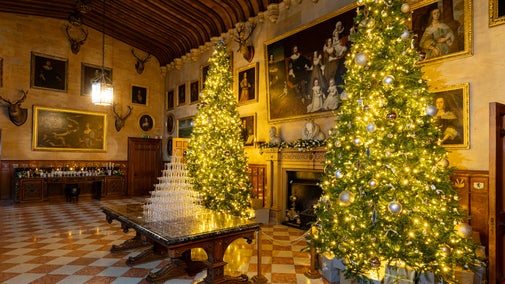
Access at Charlecote Park
We want to make sure that Charlecote Park is accessible for all visitors. The historic house, gardens and estate we care for present challenges in creating access for all, but we’re taking steps to ensure that as many people as possible can experience Charlecote’s beauty, nature and history. Here you’ll find information about access across the different areas of Charlecote Park and how to make the most of your visit.
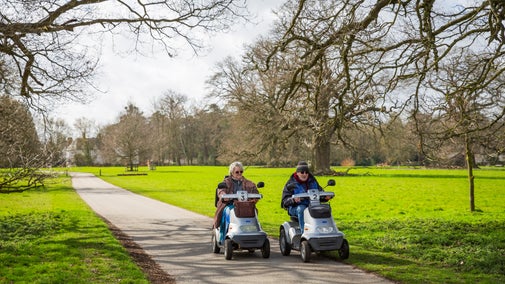
Group and school visits to Charlecote Park
Discover a Victorian family home and landscaped park on a group, school or educational visit. Find out how to book and what to expect from your group visit here.

Car-free travel to Charlecote Park
To encourage visitors to travel more sustainably, as part of the Good Journey initiative, we are offering a free regular hot drink to visitors who visit Charlecote Park with a valid train ticket, bus ticket or a bike helmet*.

Visiting Charlecote Park with your dog
Charlecote Park is a two-pawprint rated place. There's plenty of space to explore with your dogs along our special walking routes. With acres of beautiful parkland to visit, come and wander with your four-legged friend.

Venue hire
Special occasion photography at Charlecote Park
With picturesque parkland, riverside views and tranquil gardens, Charlecote Park is the perfect backdrop for professional wedding and engagement photoshoots.
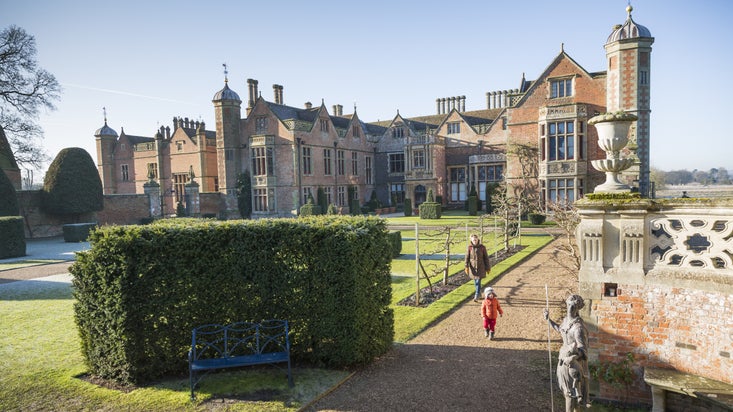
Highlights
Parkland
Informal landscaped parkland designed by 'Capability' Brown. Nestled between two rivers, with free roaming deer and sheep, it is home to a wide variety of wildlife.
House
A compact Tudor house with Victorian extensions and interiors. Home to the Lucy family for nine centuries, including present-day residents. 'Library of Memories' display on the first floor.
Historic buildings
The Service Courtyard outside the main house, including the original laundry room, brewhouse, carriage collection, tack room, slaughter house, Victorian kitchen and scullery.
Garden
Relaxed gardens created by Mary Elizabeth Lucy. Includes ancient cedar trees, flower borders, and a parterre overlooking the river.
Eating
Light bites and meals available in the Orangery Restaurant. Light bites at the Wood Yard Café. Ice creams and snacks from the Stables Gardens trailer, open on busy days. Opening days and times for each outlet vary.
Shopping
Gifts and homeware in the Servants’ Hall Shop. Seasonal plants, gardening equipment and items for outdoors lifestyles at Avenue Plants. Second-hand bookshop next to the carriage houses.
Spotlight events
Step back in time to the Victorian era!
Celebrate Christmas in style at Charlecote Park with family and friends. Wonder at the extravagantly decorated house styled as a Christmas party from the mid-1800s and enjoy festive food and shopping.
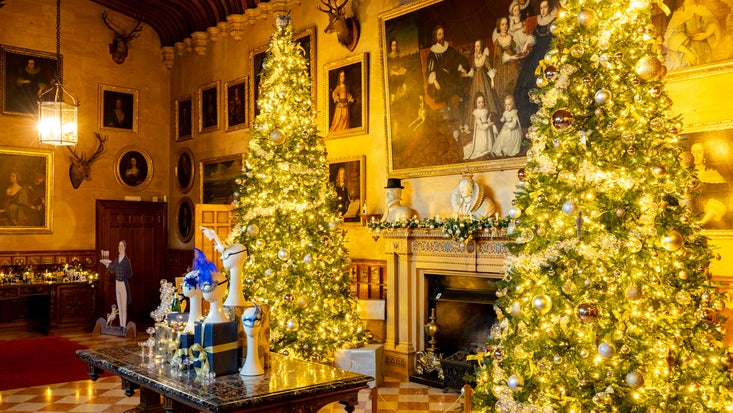
Things to see and do
Family-friendly things to do at Charlecote Park
Entertain the whole family this autumn at Charlecote Park. Go on a mushroom hunt, play and explore the estate, and spot the wild deer herd, the flock of Jacob sheep, as well as lots of wildlife.
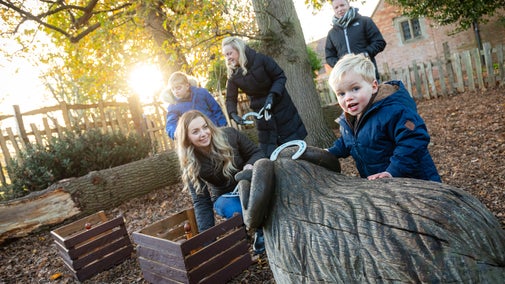
Things to do in the garden at Charlecote Park
There are lots of seasonal highlights to discover in the garden at Charlecote, including a formal riverside parterre, shaded woodland garden and a Victorian summerhouse.

Things to see and do in the house at Charlecote Park
Discover a fine example of a Victorian home at Charlecote Park, with its vast collection of treasures and immaculately preserved Victorian kitchen and outbuildings.
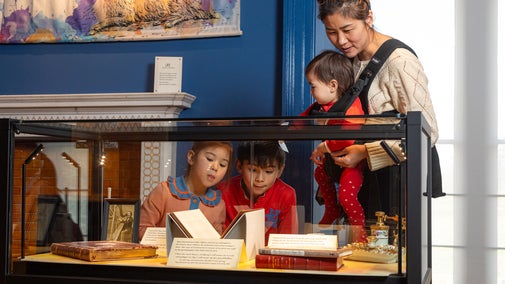
Exploring the parkland at Charlecote Park
Walk through an estate brimming with wildlife, from fallow deer to spotted Jacob sheep, and find out what else there is to see on a visit to Charlecote Park in Warwickshire.

Things to see and do in the Service Courtyard
Discover one of the best carriage collections of the National Trust.
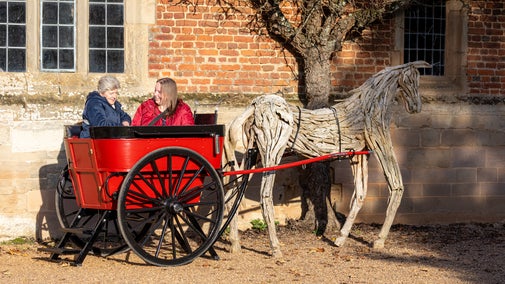
Things to do on rainy days at Charlecote Park
It's not always sunshine at Charlecote, but you can still enjoy the nature, beauty and history that can be found here. There are plenty of buildings to explore, and a lovely (if wet) day out awaits those who dare brave the rain. Sometimes the best memories are made when we don't expect it!
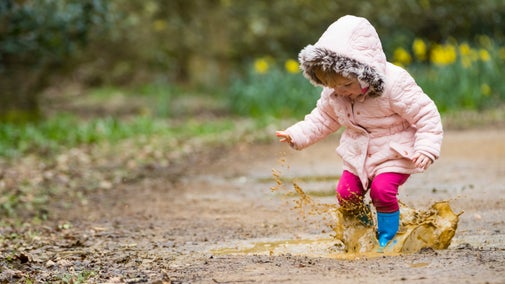
Eating and shopping
Eating and shopping at Charlecote Park
Whether you’re looking for a quick snack with your dog or relaxing lunch with friends, we’ve got a choice of places to eat, drink, and shop at Charlecote.
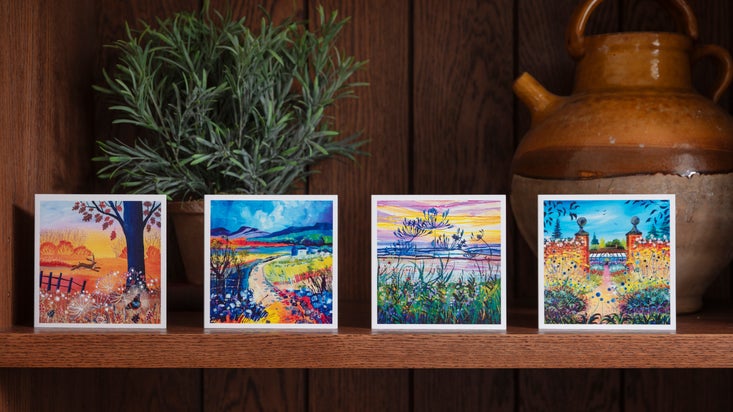
Top trails
Parkland walk at Charlecote Park
Walk through the parkland at Charlecote Park and take in the scenery, history and wildlife in this tranquil corner of Warwickshire.
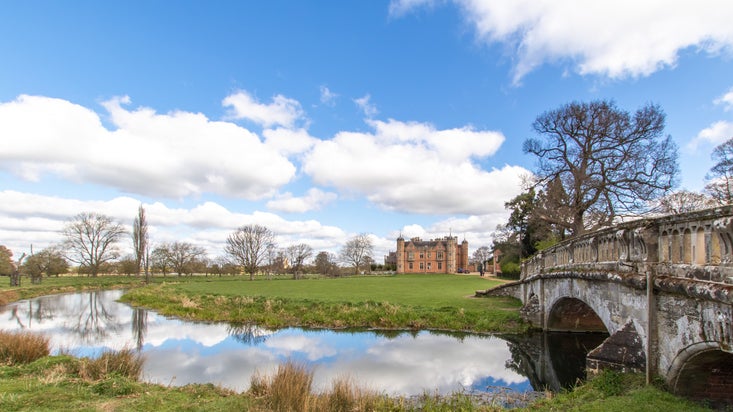
Places to stay

1 Home Farm Drive
With its own private garden, this former stable on the Upton estate has an Art Deco-inspired interior.

Snowshill Manor Farmhouse
A gorgeous cosy Cotswold cottage with heaps of original features and walks from the door.
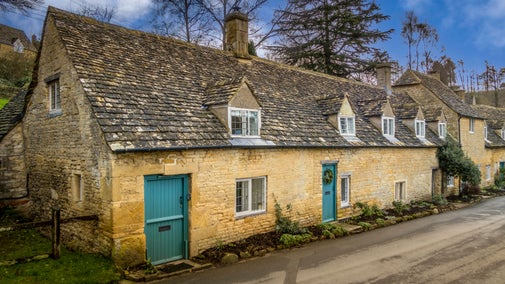
Diston's Cottage
A stable door and a woodburning stove make this pretty cottage perfect for a Cotswold country break.
Upcoming events
Christmas Trail: The Butler's List
Help John Foster, the butler of Charlecote, find all the servants and ensure they have completed all their tasks before the winter ball.
February half-term Welly Wander
Join us for a family-friendly trail in the parkland over February half term.
About Charlecote Park
Charlecote Park, a family home for more than 900 years, was transformed in the 1800s into one of the finest examples of Elizabethan Revival style by its owners Mary Elizabeth and George Hammond Lucy.
Overlooking the river Avon on the edge of Shakespeare’s Stratford, it is a place of surprising treasures, which reflect the tastes and memories of the Lucy family.
The exceptionally well preserved working spaces, the laundry, brewhouse and kitchen, give a taste of past activity, while the stables still hold the family carriage collection.
In the parkland, Jacob sheep and fallow deer roam across the landscape designed by 'Capability' Brown, while the formal parterre and shady woodland garden that Mary Elizabeth loved so dearly are a haven for pollinators.
History
History of Charlecote Park
Generations of the Lucy family have shaped Charlecote Park over the centuries, read about their triumphs and failures.

Our work
Our work at Charlecote Park
Learn about the vital work we’re undertaking indoors and out at Charlecote, from restoring buildings and monitoring collection items, to maintaining healthy habitats for wildlife.

Making improvements at Charlecote Park
Find out how we’re tackling climate change and improving facilities for Charlecote’s visitors. Discover how these changes may affect your visit, and how your support makes a difference.
Flooding at Charlecote Park
At Charlecote Park, the parkland is prone to seasonal flooding, coming right up to the upper stairs of the Parterre at the back of the house. It happens when the River Avon, which runs through the parkland, bursts its banks. The reasons why are connected to Charlecote's geography.
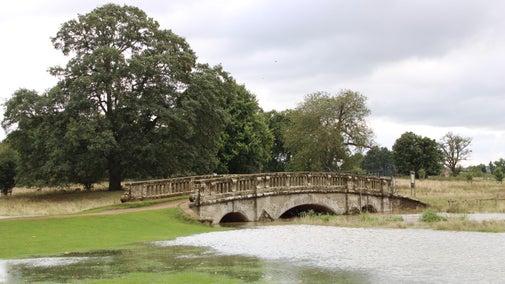
Support us
Volunteer opportunities at Charlecote Park
Are you passionate about Charlecote? Get involved and join a team of 300 volunteers who help us bring Charlecote to life.
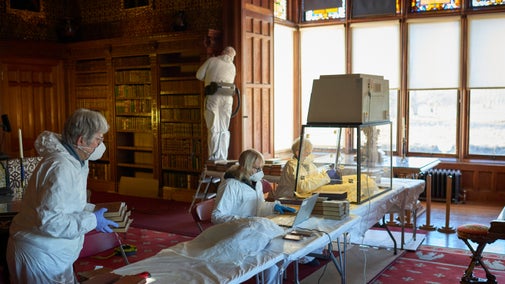
Fundraising at Charlecote Park
From establishing a vibrant wildflower meadow to fixing a temperamental Victorian central heating system, read how your support makes a difference.

Art and collections
Charlecote Park's objects and collections
Explore the objects and works of art we care for at Charlecote Park on the National Trust Collections website.
